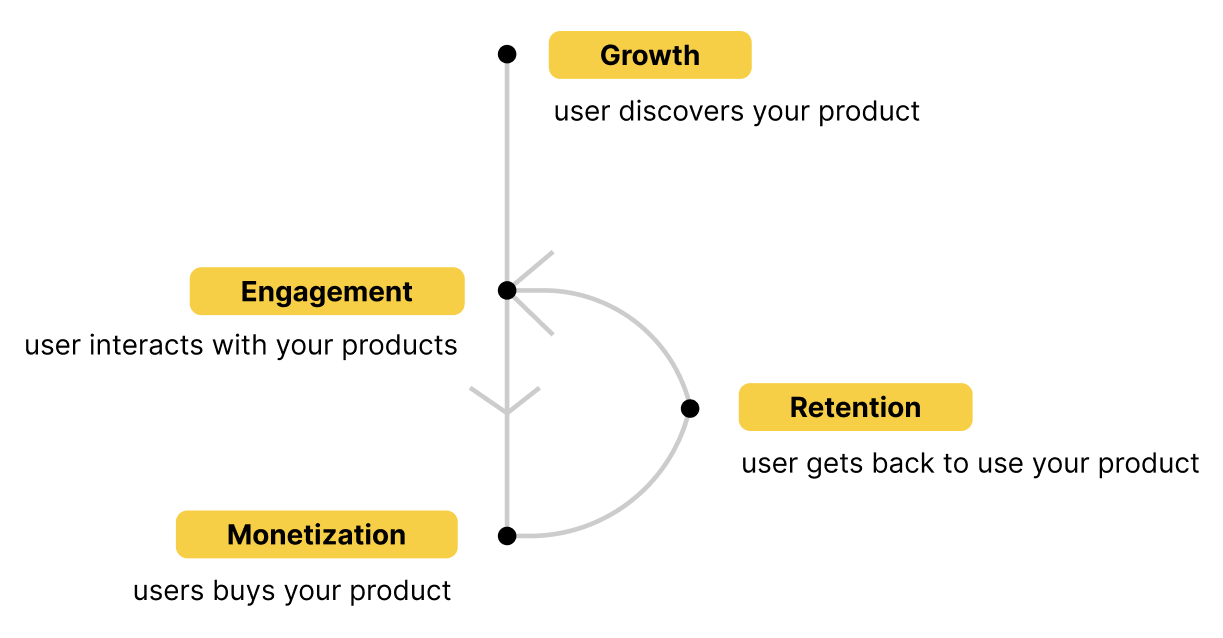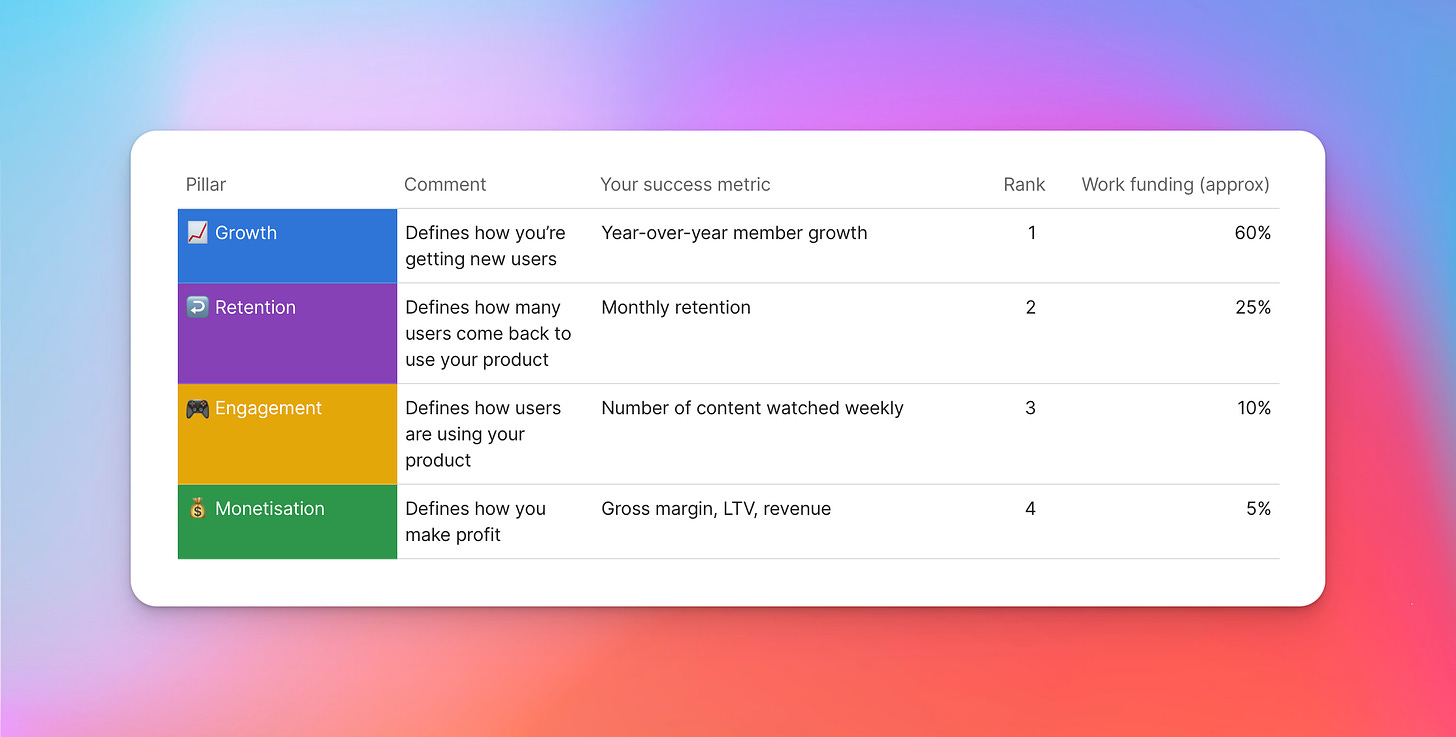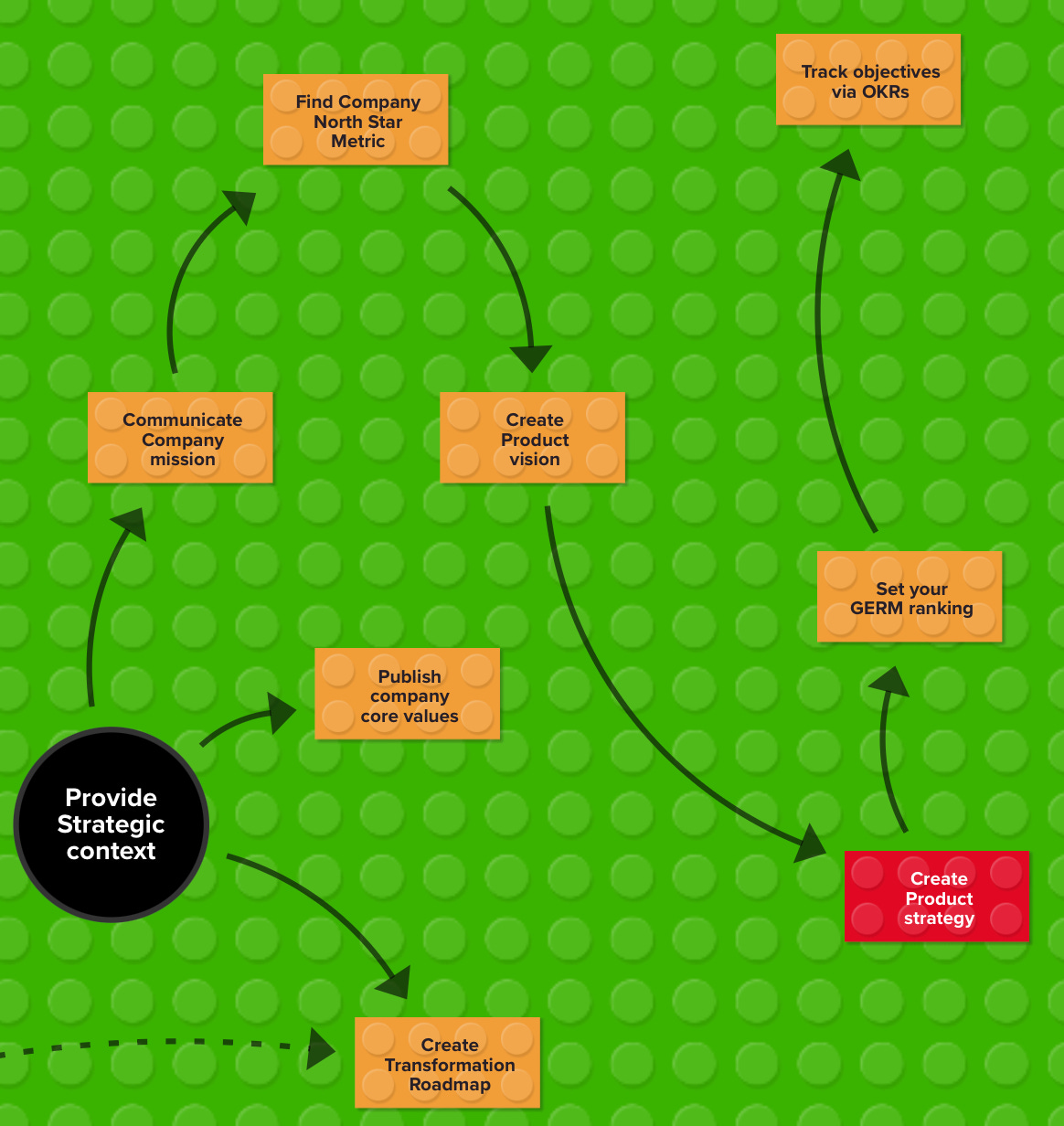GERM Ranking —How to Provide a Strategy for Your Teams in 7 Simple Steps (FREE Slides Deck inside)
Show your teams' strategic direction by ranking your four pillars—growth, engagement, retention, and monetization.

As the organization grows, there is an increased need for a clear direction for teams to focus on. Providing strategy can often be paralyzing, especially if you haven't done it before.
In this post, I'll show you how to create a strategy by defining and ranking your four pillars—growth, engagement, retention, and monetization (GERM, in short).
You'll learn how other companies like LinkedIn or Netflix use GERM ranking to align their teams.
📩 In this issue, you'll find:
7️⃣-step guide on how to define and rank GERM in your company
Workshop recipe with free companion tool to walk you through GERM workshop step-by-step
Free pre-formatted slide deck to communicate your GERM rank to the team
You can preview slides here:
Now grab your favorite drink ☕️, catch a high five from me for trying to leave the world better than you found it 🙌, and let's rock&roll 🤘.
Are you missing a strategy?
Take a moment and answer these questions:
How do you define Growth, Engagement, Retention, and Monetization in your company?
What are the success metrics of those pillars in your company?
Which pillar is the most important one for your company currently?
Would your team know the answers to the questions above?
Would their answers be the same as yours?
If your answer to any of these looks like "no", you may suffer from a lack of strategy. It means your teams may be all over the place without a clear focus. And it's your job as a leader to provide the strategic context for your teams. So let's fix that by applying a simple framework that should provide the direction you need - the GERM model.
What are GERM pillars?
Every company has four strategic pillars:
📈 Growth - defining how you're getting new users,
🎮 Engagement - defining how your users are using your product,
↩️ Retention - defining how many users come back to use your product,
💰 Monetization - defining how you make a profit
These pillars form a customer lifecycle loop:
Know your success
You should know when you're happy about your progress on certain pillars. Every pillar should have its success metric.
Here are some example success metrics for each pillar:
📈 Growth (defining how you're getting new users):
Signups over a period of time
Number of registrations
🎮 Engagement (defining how users are using your product):
Number of articles read
Number of posts liked
Number of products added to wishlist or cart
Number of transactions
Search phrases used
↩️ Retention (describing how many users come back to use your product):
Number of users coming back in the next X hours/days/months
Daily active users / weekly active users rate
💰 Monetization (describing how you make money):
Gross margin
Customer Lifetime Value
The average revenue per purchase
Here are some examples of how specific companies define their success metrics:
Netflix
Growth: Year-over-year member growth
Engagement: Number of content watched weekly
Retention: Monthly retention
Monetization: Gross margin, LTV, revenue
Facebook
Growth: Active user growth YOY
Engagement: Number of posts liked
Retention: Daily active users
Monetization: Revenue
Ranking GERM pillars
Your teams should be working on all four pillars, but not equally. Product or marketing teams can easily focus on any of these pillars. If you don't point to a single source of focus explicitly, teams can be all around the place.
A good strategy is about making hard choices, so you must prioritize your company pillars to create that much-needed focus that will hopefully help you achieve better results.
Which pillar should you prioritize?
I wish I had a better answer: it depends. Ranking GERM pillars depends on many factors, and can priorities you'll set will bring different effects.
For example:
Prioritizing the 📈 growth of new customers can increase company economies of scale, create a stronger brand, and give you customer data that you can then use in your recommendations engine or customer re-targeting.
On the other hand, prioritizing 💰 monetization over growth can lead to higher profits year-over-year that can be re-invested into growth in the following year.
Don't be tempted to say two pillars are equally important. When you do, you will create confusion, not focus.
If two things are equally important, then nothing is important.
When it comes to 💌 Product Blocks newsletter, at launch, my GERM rank would be as follows:
That's it. This table represents a GERM ranking.
GERM ranking is a first-class citizen in your company strategy. It provides a simple but powerful message to focus and align your teams.
When to change your GERM rank?
GERM rank is a mid-to-long-term commitment. Update your GERM rank yearly or when something significant happens to your company, industry, or competitor landscape.
How to create GERM ranking step-by-step?
Product blocks newsletter is all about practical advice you can apply the next day. Below you will find a workshop recipe you can apply to your company that will result in your GERM ranking. I will also provide you with free slides you can use when you are communicating your GERM ranking.
Step 0️⃣ Use a companion document (optional)
To help you run the workshop exercise, I've prepared a document in Coda. Coda is a flexible document-based platform to connect, document, and visualize your data. Think Notion + Confluence + Airtable on steroids.
If you use it in the workshop, by the end of it, it will connect all the steps and give you a one-pager summary:
🧩 If you want to use Coda…
1. Go to this page and click "Duplicate this doc".
If you're new to Coda and want to learn more, click here.PS: I like Coda, but you don't have to use it—you can use Miro, Excel, Google Slides, or a simple whiteboard and post-it notes. Whatever tool you use, follow the steps below.
Step 1️⃣ – Invite the right people
GERM ranks company strategic pillars. For this workshop, I recommend inviting your leadership team:
CEO
Head of Finance (CFO)
Head of Product (CPO)
Head of Technology (CTO)
Head of Marketing (CMO)
Head of Sales (CRO)
Step 2️⃣ – Introduce GERM pillars
Make sure everyone in the group understands the theory behind GERM pillars and why it's essential to provide a strategy to your teams. Explain it to them or share this post with them.
Step 3️⃣ – Success metrics
Every pillar should have its success metric. What single metric should move if you'll see good progress on a particular pillar? Discuss possible success metrics for growth, engagement, retention, and monetization with workshop attendees.
Try to assign one success metric to every pillar. This metric will help you and your teams understand whether you're progressing in the right direction with your strategic pillars.
At this step, your table should look like this:
🧩 If you want to use Coda…
1. Go to Step 3️⃣ – Success metrics in your duplicated Coda document
2. Fill out Success metrics for your companyStep 4️⃣ – Rank GERM pillars
Your teams should be working on all four pillars, but to create much-needed focus, you must prioritize them.
Prioritizing means assigning a number (either 1, 2, 3, or 4) to every pillar and agreeing on the ranking as a group. This will mark priorities for your next 12 months.
Let everyone write their idea about the ranking on a post-it note. Once everyone finished writing, ask everyone to share the order they picked. Discuss that. Your goal at this step is to agree on priorities assigned to each pillar.
Agreeing on the right priorities can take some time, but ultimately, it's the leaders' job to make tough choices. That's why you get a higher salary.
By the end of this step, your table should look like this:
🧩 If you want to use Coda…
1. Go to Step 4️⃣ – Rank GERM pillars in your duplicated Coda document
2. Reorder GERM pillars in the Coda document to reflect your decision by hovering over a pillar and dragging the dots handle to the left of the row.Step 5️⃣ – Pillar funding
Prioritizing one GERM pillar doesn't mean you should stop working on other pillars. But the amount of work should be different depending on their position in the ranking. We need to assign some funding.
Default to the percentage values in the table:
Adjust it very slightly if you need. Remember that you can always re-prioritize your pillars the following year or the moment something vital happens to your business.
Remember: focus is the result of hard choices.
Discuss how you feel about that work funding. It may look good on paper, but can you apply it to your current teams? How realistic is it?
Some teams can focus on a single pillar, and some can work on a few. Make sure that if you sum all work done in your company, it will be close to the percentages you've assigned.
🧩 If you want to use Coda…
1. Go to Step 5️⃣ – Pillar funding in your duplicated Coda document
2. Click the "Add default funding" button to assign default pillar funding as in the table above.
3. Adjust it slightly if needed.The final result of the workshop should look like this:
This simple table gives your team a lot of clarity regarding how they should prioritize their work.
Step 6️⃣ – Communicate
Great job! Now it's time to communicate your GERM rank to the company.
If you used Coda, you would find your one-pager table there for documentation purposes, but you may want something fancier.
Below you will find a pre-reformatted slide deck for you. You'll need just a few minutes to adjust it to reflect the result of your discussions above.
Your slides will look like this:
Versions available:
Keynote
Powerpoint
Google Slides
When it comes to communicating your pillars – here are some options:
Announce it during your next All-Hands meeting
Announce it during a dedicated meeting
Combine it with one or more elements of the strategic context and then announce it (more below)
Step 7️⃣ – Continue working on your strategic context
Your primary job as a leader is to set a direction and align teams around it. That information forms the company's strategic context. GERM rank is one of its elements.
Strategic context includes:
Company mission, explaining why the company exists and what impact on the world does it want to have
GERM ranking, providing a ranking for growth, engagement, retention and monetization
Company objectives, providing with small amount of company-wide goals and concrete success measurements
Product vision, describing the future you are trying to create, typically in 3-10 years.
Product strategy, describing a plan of how to make product vision a reality
I'll cover each block in the future.
Now pat yourself on the back. Providing your teams with strategic context is one of the most important things you can do as a leader.
Closing thoughts
The GERM rank is a great way to show your teams' direction and increase their focus and alignment, ultimately leading to better results. It's also a straightforward strategic framework to eliminate the fear of working on your strategic context.
Try it, and let me know how it went in the comments on this post.
Discover other Product Blocks
Find this block on the Blocks Catalog and see how it connects to other blocks:










